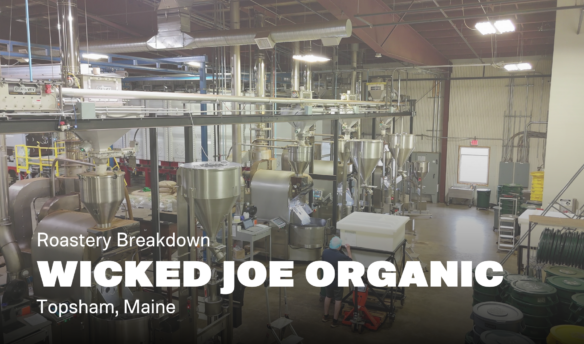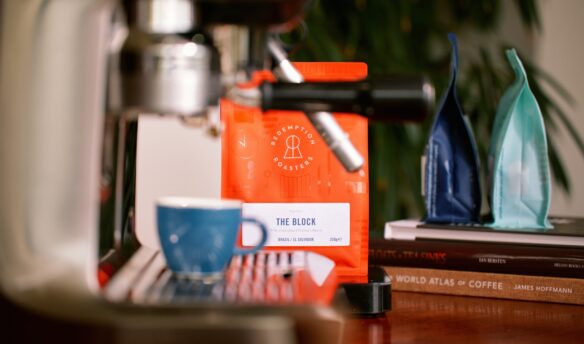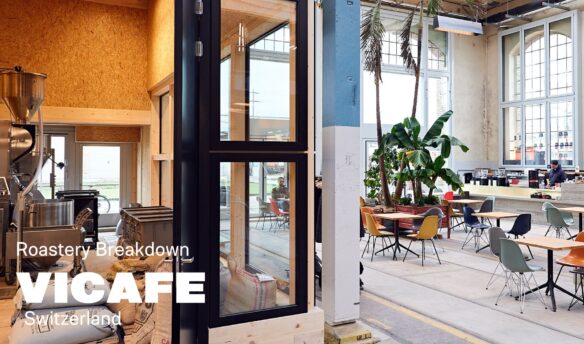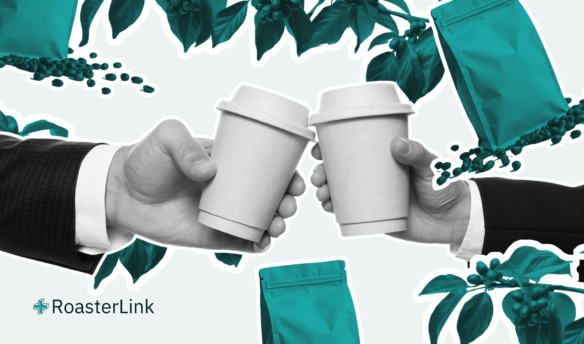The holiday season is here, and the cold weather (or, if you are in a warmer climate, the dream of scarves and beanies while opening presents poolside) means that festive drinks are hitting coffee shop menus. But also gracing the shelves of cafes and grocery stores during this time of the year are holiday coffee blends, bags of beans that seem to pop up in the waning months of the year, boasting wintery graphics and tasting notes reminiscent of beloved seasonal flavors.
Peppermint mochas tend to get all the love during this season, but holiday blends fuel our December work weeks and are the perfect accompaniment to holiday treats like a slice of pie or a plate full of cookies. Holiday blends allow roasters to build a coffee offering around the flavors of the season and celebrate this time of year.
But the process of creating a holiday—or winter—blend requires skill and precision. While many blends aim to evoke widely loved and palatable flavors like chocolate and cherry, narrowing in on specific “winter” notes is challenging. Yet holiday blends remain popular, with patrons anticipating their arrival on their favorite roaster’s menu because their festive flavors ring in the season and give coffee gift-givers the perfect option at holiday gatherings.
So, what goes into making a holiday blend? We asked the roasters behind some of the year’s most anticipated holiday blends about how they bring cheer and light into their winter blends.
Thoughtful Coffee Blends
Based in Quebec, Canada, Rabbit Hole Roasters releases a winter blend every year called Holiday Festif, featuring a blend of three coffees: a naturally-processed coffee from Ethiopia, a washed yellow Catuai from Guatemala, and an ethyl acetate decaf Pink Bourbon from Colombia.
“We always use a chocolate-forward coffee, usually from Guatemala, and a natural Ethiopian for the fruit jam aspect,” says David Lalonde, co-owner of Rabbit Hole. “Pretty straightforward. But what makes this blend come together so nicely has been the decaf from Colombia! This brings a very spicy tone to the blend, and it makes the brews taste like the warm wine that is served in European Christmas markets.” According to Rabbit Hole’s website, the coffee evokes flavors of “cinnamon, rosehip, nutmeg, demerara sugar” and “sipping on this coffee will instantly transport you to a Christmas Market or even make you believe in Santa again!”
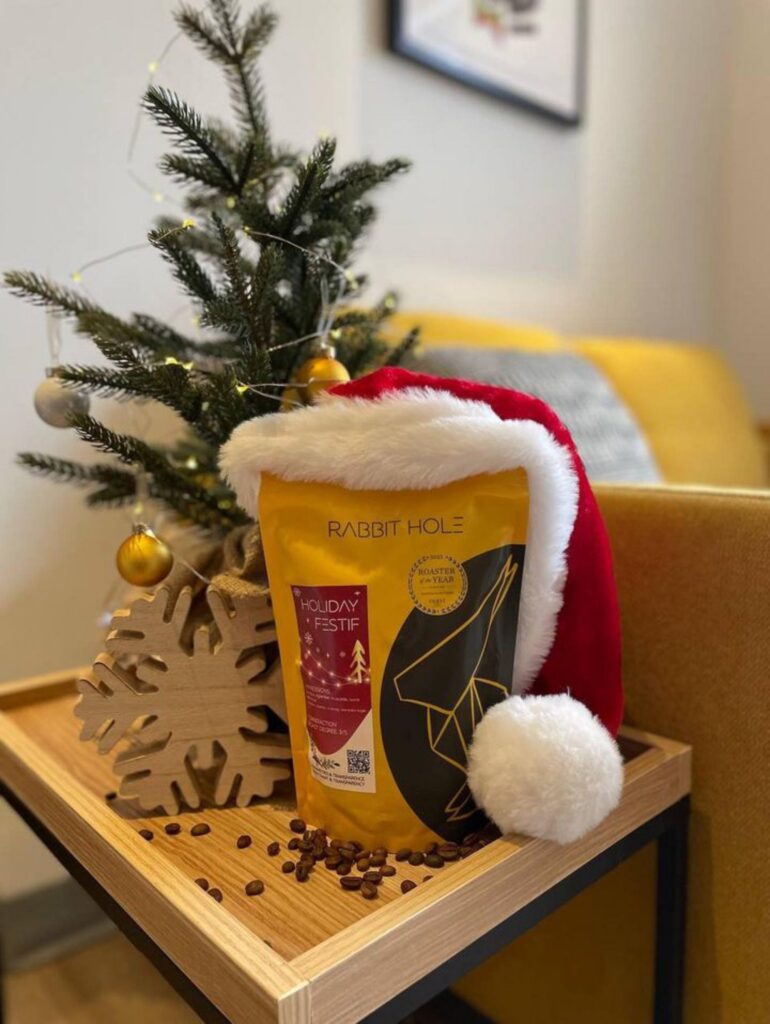
The blend features coffees that Rabbit Hole already includes in its regular lineup. Lalonde says he buys coffee from these same producers and regions every year, meaning that the farmers can count on Rabbit Hole’s orders and that Lalonde and his team know what to expect on the cupping table. The coffees are blended post-roast, meaning each coffee is roasted on its own and then mixed to make the final holiday blend.
Something about holiday blends summon feelings of togetherness, a sensation roasters try to recreate in their winter blends. “[The] important thing to remember for us is who we are making this coffee for,” says Matt Ferraro, head roaster at Black & White Roasters in North Carolina. “It is our friends, family, and those near us that we want to share something with this holiday. But it’s also for us, and it is something that we are proud of and want to enjoy ourselves.”
For ‘Tis The Season, Black & White’s 2023 holiday blend, “the idea is to create this effect of [a] ‘warm hug’ while providing the comfort of a mulled wine and/or baked pie alongside our friends and family—and ode to all our favorite things around the holiday,” says Ferraro. Black & White’s holiday blend is incredibly popular, so sourcing enough coffee requires months of prep: this year’s blend features a cinnamon co-ferment anaerobic coffee from Estabon Zamora out of Costa Rica, a Gamatui Hydro Honey from Uganda, and a Cabañas washed coffee from Honduras. Unlike Rabbit Hole, Ferraro says they roast all the coffees together. “We find the most cohesion of flavor in our Loring roaster when we pre-roast blend, and if it tastes best this way, who are we to argue?” he asks. “Don’t knock it till you try it!”
Intentionally creating a thoughtful blend goes against common thinking about blends as a vessel to cycle through older and aging coffees. Jack Fleming and Aimee Biggerstaff of Recluse Roasting Project out of Richmond, Virginia, use their winter blend, Sweater Season, to make a statement about keeping each offering intentional. “Sweater Season is a blend of two microlots, both relationship coffees. One is a honey process from Honduras [sourced from] Oscar Omar Alonzo from his farm Cual Bicicleta; [the other a] natural process Costa Rica—La Fila from the Urena family. The Honduran has a lot of chocolate and caramelized sugars, and the Costa Rican coffee gives it that fresh pop to excite,” says Fleming.
“We don’t typically do blends,” Biggerstaff clarifies. “So we thought it would be a fun way to end the year and allow folks to taste something different from us. In the industry, blends tend to be about moving old coffee or a blend of cheap coffee.” Sweater Season has become one of Recluse’s top sellers, and like Rabbit Hole, Fleming and Biggerstaff create the blend using beans from producers they already work with, allowing them to buy more and support existing relationships.
Making A Blend, Checking It Twice
A winter blend takes months of planning to nail down the right coffees and how much of each to use. For Holiday Festif, the Rabbit Hole team “start[ed] cupping in early November, and it usually takes three or four cupping bowls with different percentages of each coffee to find a winner.” says Lalonde.
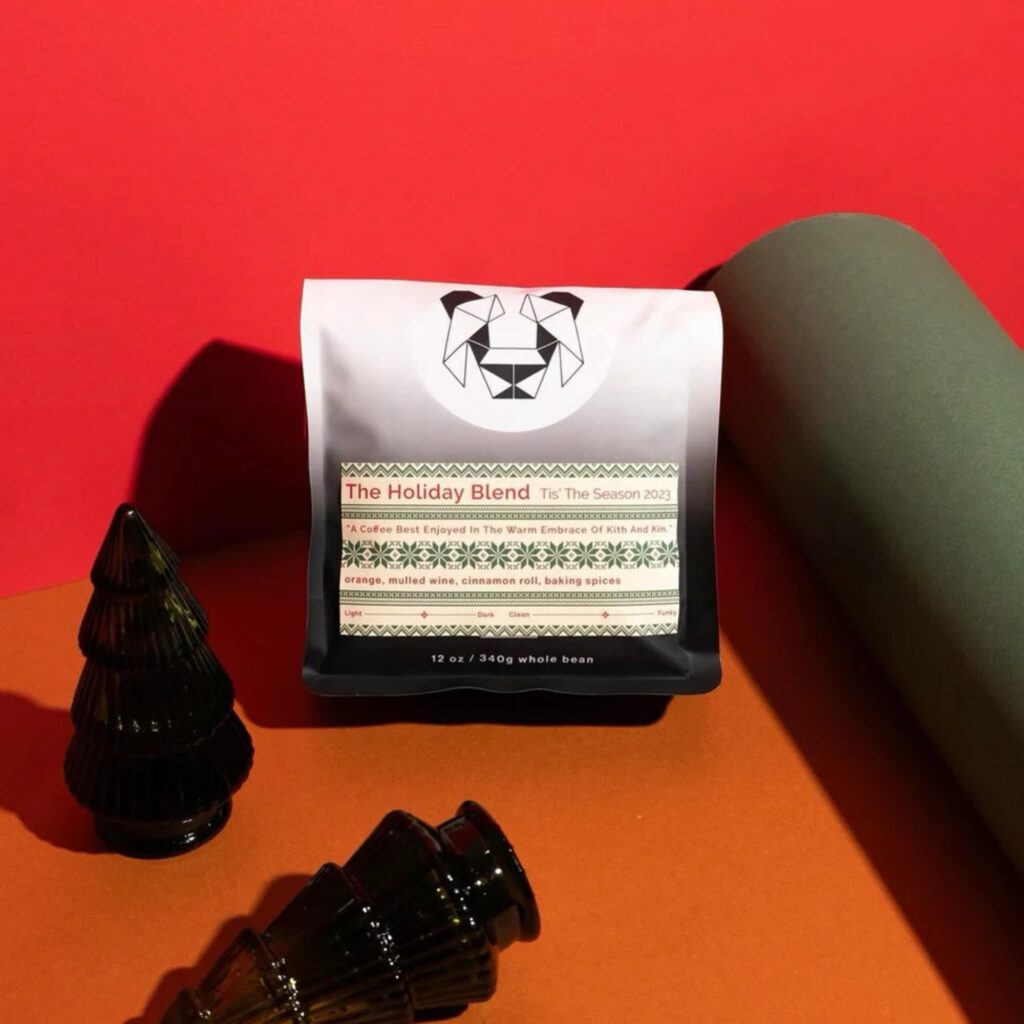
“We always have an idea of what coffees will be fresh around that time of year, so that always gives us a starting point,” says Biggerstaff. “We cup a table of ten or so different blends at different ratios and narrow it down to our favorites. Then we cup those three or four favorites to find that year’s Sweater Season Blend.”
Once the final blend is made, it’s time to enjoy! The team at Rabbit Hole says they are “classic coffee drinkers” who have been enjoying Holiday Festif at a 1:16 ratio on an Origami Dripper, but Lalonde also recommends trying the blend as an espresso or pairing it with eggnog.
“This is a coffee that both our customers and employees look forward to each year, myself included,” says Ferraro. He’s been enjoying ‘Tis The Season on batch brew in the roastery. Fleming and Biggerstaff have been sipping on Sweater Season either on batch brew or on Biggerstaff’s “go-to” pour over option, the Kalita Wave.
The Season of Giving
Every year, Rabbit Hole dedicates a portion of sales of Holiday Festif to a charitable cause. “For the third year in a row, we will donate to True North Aid, a Canadian nonprofit dedicated to improving the life of remote Indigenous communities. Our donations go towards their food security initiative,” says Lalonde.
Rabbit Hole sets aside $6 for every bag sold and will also use proceeds from Holiday Festif to donate to the Palestinian Youth Movement. “It’s the first time that we donated to more than one cause,” says Lalonde. “I’ve been engaged and learning about the Palestinian cause for years, and this year has been a catastrophe for Palestinian civilians. This is a cause that is very dear to my heart: I truly never imagined I would witness a genocide unfolding live on social media.”
“I am a firm believer that coffee, being a global and beloved beverage, can help change many facets of the world we live in, both in coffee origins and beyond,” Lalonde continues. “This blend is an embodiment of that philosophy. We aim to sell 333 bags and donate $1000 to both organizations.”
As the holiday decorations come out of storage and coffee shops debut their winter lattes, roasteries are working to craft festive blends to evoke the spirit of the season, do good with their coffee choices, and serve a jolly cup of joe. Blending coffees to get the right balance of warming spices, jammy fruit, and mulled wine requires intentionality, attention, and care—and maybe just a sprinkle of winter cheer.













